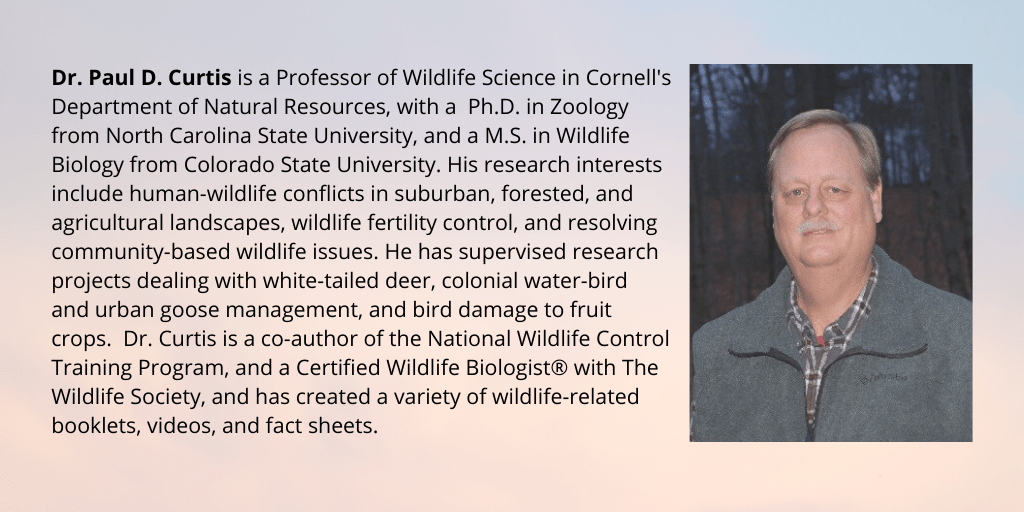Dealing with Mole Problems in Turfgrass
Guest post by Paul D. Curtis, Department of Natural Resources and the Environment, Cornell University
Moles are small, insect-eating mammals that are highly specialized for living underground. Unlike voles, moles have very small eyes, no external ears, a hairless, pointed snout, and forefeet that are enlarged and turned outward for digging in the soil. All three mole species found in New York State have short, thick, velvety fur that lies flat in either direction as the mole makes its way through a burrow system. Moles are classified as unprotected animals in New York, so they can be trapped or removed whenever they cause turf damage.
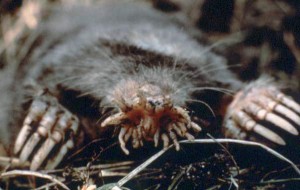
The two most commonly-encountered mole species in New York State are star-nosed (Condylura cristata) and hairy-tailed moles (Parascalops breweri). The star-nosed mole may be found throughout the state. It typically reaches 5 inches in length and its nose is surrounded by 22 small, fingerlike projections, which readily distinguishes it from the other mole species.
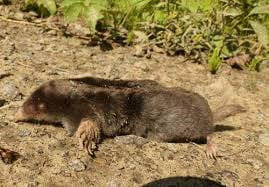
The hairy-tailed mole is also found throughout New York. It grows up to 5.5 inches long and has a short, hairy tail.
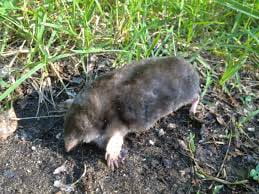
The eastern mole (Scalopus aquaticus) may occur in the lower Hudson River Valley and on Long Island. The eastern mole grows up to 6.5 inches long and has a naked tail.
General Biology
Moles spend most of their lives in extensive systems of underground tunnels where a circular nest chamber is excavated and lined with leaves and grass. They produce a single litter of three to seven young each year in April or May, after a gestation period of about 42 days. Young moles leave the nest in four to five weeks.
Habitat and Food Habits
Moles are primarily insectivorous, feeding on insect larvae (including grubs), earthworms, or other invertebrates encountered while digging in the soil. They must consume 70 to 100 percent of their body weight each day to supply energy for burrowing through the soil. Therefore, moles can be very beneficial mammals because they remove many damaging insects and grubs from lawns and gardens. However, tunneling and mole hills may damage turfgrass areas. Occasionally, moles may feed on seeds, roots, or bulbs.
Moles prefer loose, moist soil in fields and woods shaded by vegetation. Hairy-tailed moles tend to occupy fairly well-drained but moist, sandy-loam soils. Star-nosed moles tend to occur in low, wet ground especially near open water. Burrow systems may be either shallow or deep. Deep burrow systems are fairly permanent, located 6 to 24 inches below the surface, and are used for cover and for raising young. Shallow burrow systems are more temporary, and moles use them as runways while they forage just below the soil surface.
Description of Damage
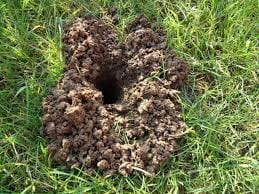
Burrowing moles occasionally damage lawns, gardens, and golf greens, uprooting plants as they tunnel through the soil in search of food. Star-nosed moles dig deep tunnels and can leave volcano-shaped hills of soil as large as 6 by 12 inches wide. Hairy-tailed and eastern moles burrow close to the surface, leaving ridges in the soil surface.
Preventing Mole Damage
Population Control
Because moles are not prolific breeders, and do not occur in high population densities, removing just a few individuals will often solve damage problems. The best time to conduct mole control is in the spring and fall when soil moisture levels are higher, but the ground is not frozen. The most effective control method is body-gripping traps designed to trap moles as they move through their tunnels. Harpoon-shaped or scissor-jawed traps of several types are available in garden supply stores.
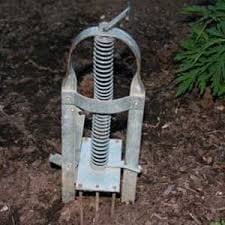
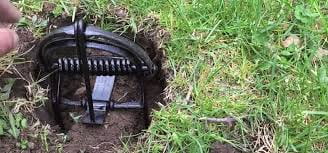
Before setting a trap, locate a surface tunnel that appears to be active. Depress part of the tunnel with your foot and return the following day. If the tunnel has been repaired, then it is an active tunnel and a good place to set a trap. If the tunnel has not been repaired it is probably inactive. Once you have found a suitable location, depress a portion of the tunnel with your foot again and set the trap over the depressed area. As the mole moves through the tunnel it will push upward on the depressed tunnel roof and trip the trigger of the trap, which is set at ground level. Covering traps with an inverted bucket can conceal them and prevent tampering by children or pets.
Toxicants and Repellents
A quick review of the New York State pesticide database revealed that more than 20 unrestricted products are currently available commercially and legally registered for use against moles. Most of the toxicants are formulated as pelleted baits, and contain either zinc phosphide (n= 8 products) or diphacinone (n= 2). Pelleted baits often are ineffective because moles prefer to feed on invertebrates rather than baits. Always check the label on any pesticide to make sure it is registered for use on lawns, golf courses, or other areas of interest.
Three mole repellents are also legally registered for use against moles in New York State. These products contain either capsaicin (n= 2) or coyote/fox urine (n= 1) as the active ingredient, and are not toxic.
In addition to these products, gas cartridges (n= 3) are registered for treating borrow moles and rodents. There are also, CO2-based products (n= 2) that use wands to fill burrows with gas and suffocate moles or rodents. These type of products have been effective for killing Norway rats in burrow systems.
I caution that most of these commercially-available pesticides for controlling moles have not been tested under scientific conditions with adequate control plots. As for many pesticide products, manufacturers need to show that the products are safe when used under label guidelines. Companies do not need to prove that the products are effective. Given what we know about mole behavior and foraging habits, the efficacy of most of the products is questionable, and would require further study.
Use of insecticides on lawns to reduce the food supply of moles is not recommended. Although insecticides may reduce availability of food in light, sandy soils, they may have little effect in heavy clay soils. In addition, treatment of a single lawn or small area will be ineffective because moles may still burrow through the treated area in search of food. Moles may also move into the area from adjacent untreated areas. Routine use of insecticides on lawns for “prevention” purposes may kill predatory insects that keep lawn pests under control naturally and should thus be avoided. Use appropriately labeled pesticides to manage insect problems, not for controlling mole damage.
Exclusion
For small areas such as seed or ornamental beds, a 24-inch-high sheet metal or hardware cloth fence can be installed around the perimeter. Bury the fence at least 12 inches underground and bend the bottom out about 4 inches at a 90-degree angle. This requires quite a bit of labor, but can keep burrowing mammals out of planting beds.
Cultural Practices
Moles are often found in low, moist areas in a lawn. Improving soil drainage may reduce invertebrate numbers. This would subsequently reduce mole abundance by removing their primary food supply.
